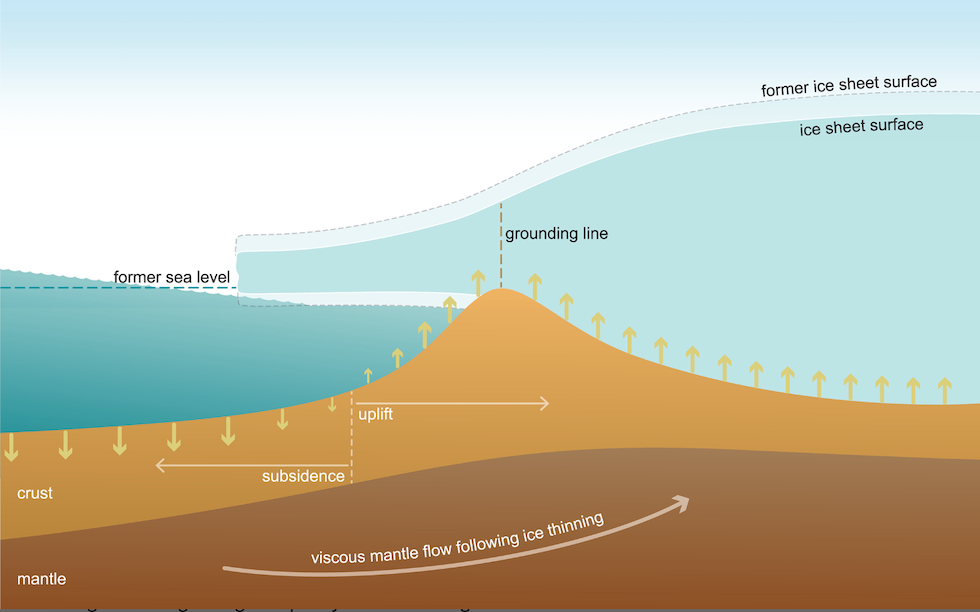News | October 16, 2024
Advancing Glacial Ice is a Puzzle from the Past

View of the edge of the West Antarctic Ice Sheet in 2016. Image credit: NASA/GSFC/OIB
The question: Why did a portion of the West Antarctic Ice Sheet that sits below sea level abruptly change direction – first retreating away from the ocean, then advancing back toward it – within just the past 2,000 years, a time of relatively stable temperatures?
The answer: A research team relied on detailed computer modeling to simulate tightly interlaced effects of ice, wind, water, temperature, and the movement of Earth itself to try to pin down the cause of this shift. They found that the most likely driver was a change in ocean water, from warm to cold – but with the added influence of Earth’s crust rising beneath the ice over thousands of years.
The changing fortunes of the ice sheet during the last 12,000 years are recorded in the atomic properties of silt, rocks, and pebbles transported by flowing glaciers and collectively known as “till.” Till deposits mark the path of the ice front, and the amount of radioactive decay in till samples can reveal when they were deposited. These measurements show ice streams within the ice sheet made a dramatic retreat between 7,500 and 5,300 years ago; radiocarbon dating and modeling suggest it “readvanced” within the past 1,700 years.

The biggest unanswered question: Was a changing climate or the changing shape of Earth’s rocky crust – due to evolving ice – the primary cause? The science team’s answer came from computer simulations of ice-sheet responses to varying degrees of temperature change in ocean water, models of changes in elevation of bedrock beneath the ice, and from coupling both kinds of models to see how these effects interact. Colder water infiltrating the ocean cavity beneath the ice shelf, caused by a regional shift to a cooler climate, appeared to be the main reason for the switch from retreating to advancing ice. But another big factor was a fall in local sea level as Earth’s crust rebounded upward, relieved of pressure as the ice above it melted and shrank. Ocean water also migrated away from the ice as the gravitational attraction between the ice and nearby ocean weakened – a result of diminishing ice mass, which also reduces its gravitational pull. The crust might have risen high enough to make solid contact with the remaining ice, helping to trigger the advancement of the ice once again toward the ocean.
Why it’s important: The massive and sprawling West Antarctic Ice Sheet is a focus of scientific attention because its collapse would bring catastrophic levels of global sea level rise. But projecting such possibilities into the future requires unraveling the intricate mechanics of melting ice. Understanding what drove ice-sheet retreat and advance in the past will help scientists better estimate how it might behave in coming decades as the world warms. The Antarctic Ice Sheet is losing its mass overall, despite pockets of ice gains like those in the West Antarctic Ice Sheet that this research team studied. The study was published in April 2024 in the journal, “Nature Communications.”
